Business Of PHC, Part 1: Plant Health Care: It Could Be the Shot in the Arm Your Company Needs
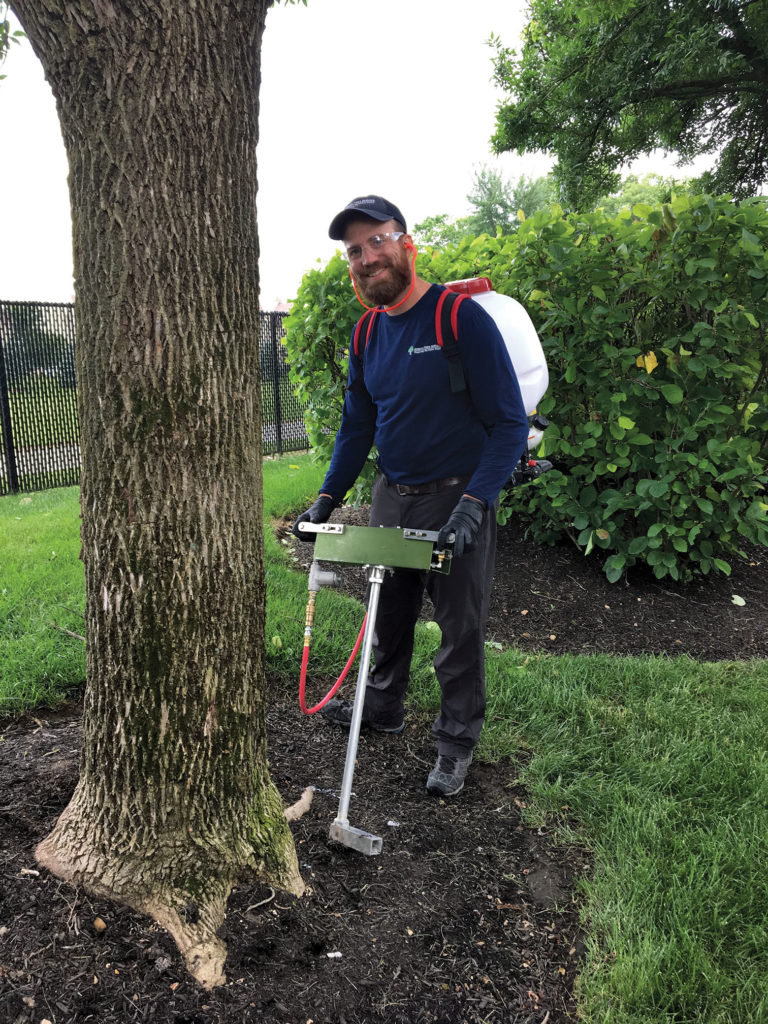
Take note: There’s a potentially lucrative source of income out there that your tree care business may not be taking advantage of, and it’s not as difficult to launch as you might think. We’re talking plant health care, or PHC, which is a natural extension for those in the green industry and a rapidly growing segment of tree care.
So, what exactly is plant health care? Tchukki Andersen, BCMA, CTSP and TCIA’s manager of tree care expertise, offers this simple definition. “The broad definition of PHC is in the initials themselves,” she says. “Plant health care is the care and maintenance of woody trees and shrubs. These are living, breathing life forms that we are managing in their current, often urban, locations.
“Everyone tends to look at PHC differently,” she notes. “But if you’re just starting out, it’s looking for those visible stressors like diseases, insect pests, rodents or an unhealthy growing environment. It’s soil management, including nutrition and knowing which trees are best suited for your area. It’s pruning of young trees for the best structure, and then it’s maintaining those trees as they mature. As they get older, it might mean cabling and bracing, as well as hazard-tree awareness to eliminate risk and extend the life of the tree. All of that can be part of PHC.”
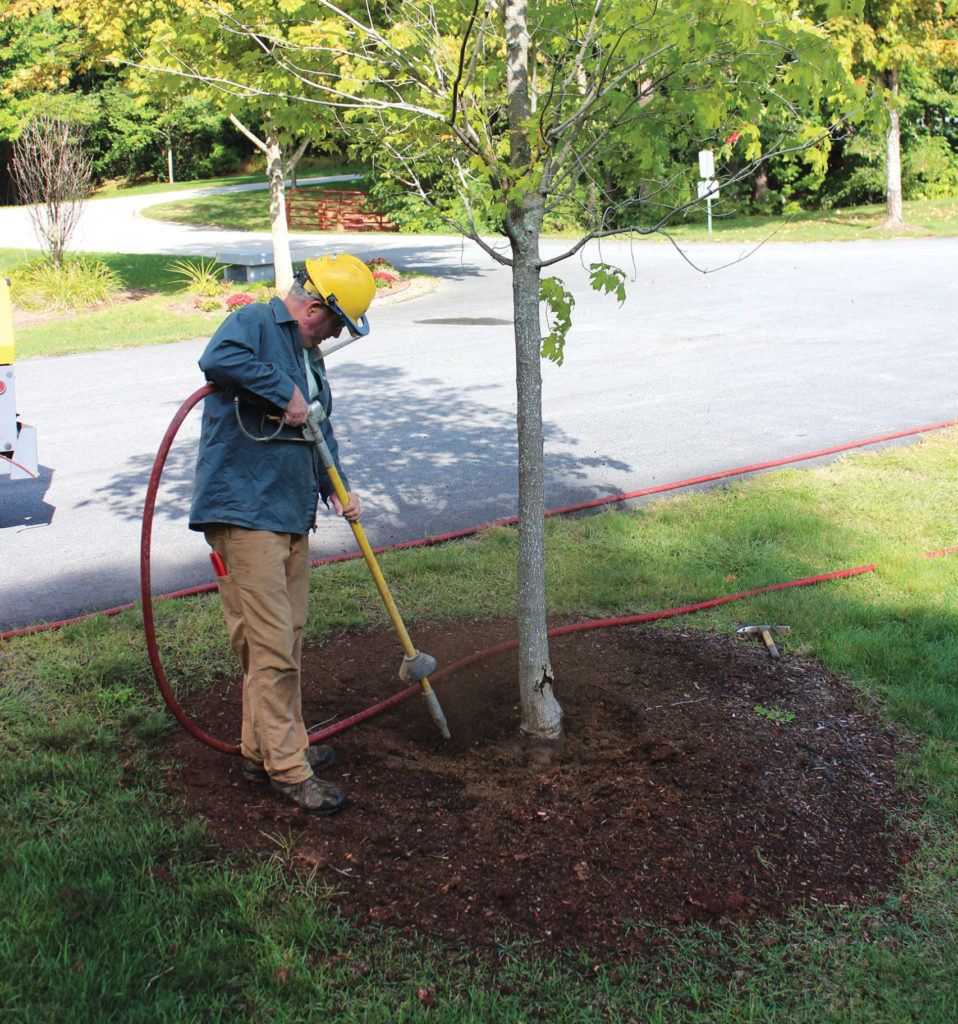
When asked why a tree care business might want to start a PHC program, Zack Shier, plant health care manager for Joseph Tree Service, an accredited, nine-year TCIA member company based in Dublin, Ohio, says, “The most natural reason is to offer the actual ‘health care’ side of tree care. Pruning, planting and removals normally are considered ‘tree care’ on their own, even though, generally speaking, they don’t do that much for the health of the tree. In fact, pruning can actually add stress to a tree sometimes. So to offer a complete circle or the whole picture of tree care, we also must address some of the underlying stress factors and issues our urban trees and soils face.”
Sylvia Provost, president of Henderson’s Tree Service, LLC, an accredited, 24-year TCIA member company based in White River Junction, Vermont, says one of the biggest reasons to begin a plant health care program is to offer your existing clientele a completely encompassing tree service. “It’s the convenience of one company coming on their property and doing it all. After all, why would you want them going to someone else for PHC?” she asks.
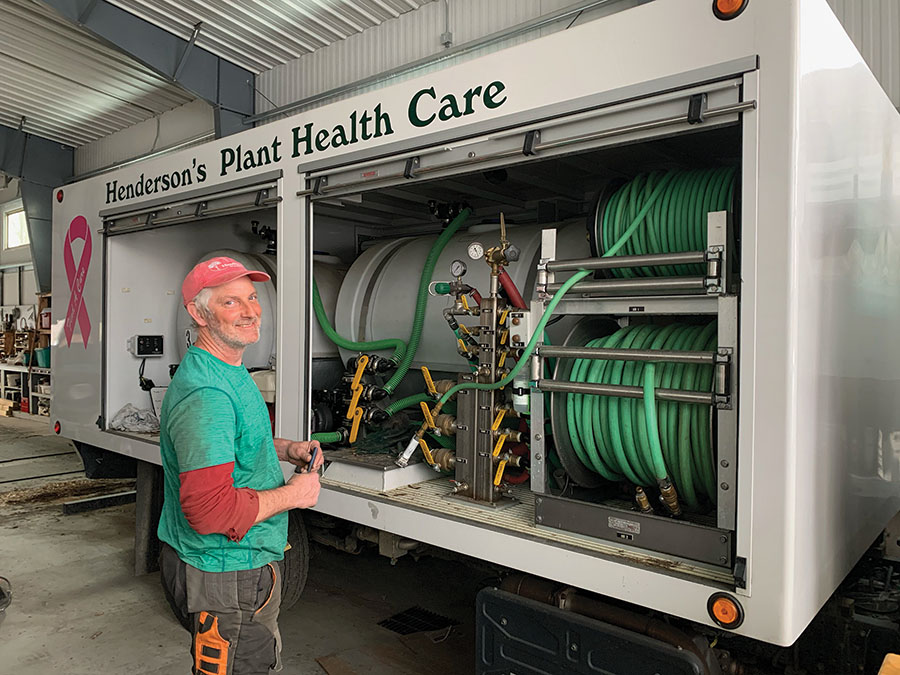
Shier adds, “As a company, when you’re pruning trees and notice they’re stressed or deficient, it’s hard to educate your customer when you don’t even offer the treatments needed to help the tree along, let alone know how to communicate that knowledge clearly. Almost every tree care company I know of started as a tree pruning and removal company and then added PHC later.”
Tammy Kovar’s company, Biological Tree Services, a nine-year TCIA member company based in Sarasota, Florida, is a notable exception. “My company started with PHC,” she says. “You don’t save the tree by trimming the tree, you save the tree underground. Without healthy roots, you won’t have healthy trees. So tree care companies need a paradigm shift, because they’re not affecting the life of the tree without plant health care.”
If that isn’t enough to convince a tree care company to launch a PHC program, there’s always the financial end. “Another common reason to start a PHC program is how profitable it can be,” Shier notes. “Generally speaking, PHC sections make more money per hour of input than tree care does. PHC requires a more unique set of knowledge skills, licenses and logistics, but with less manpower and overhead, which results in a higher rate of charge with fewer costs.
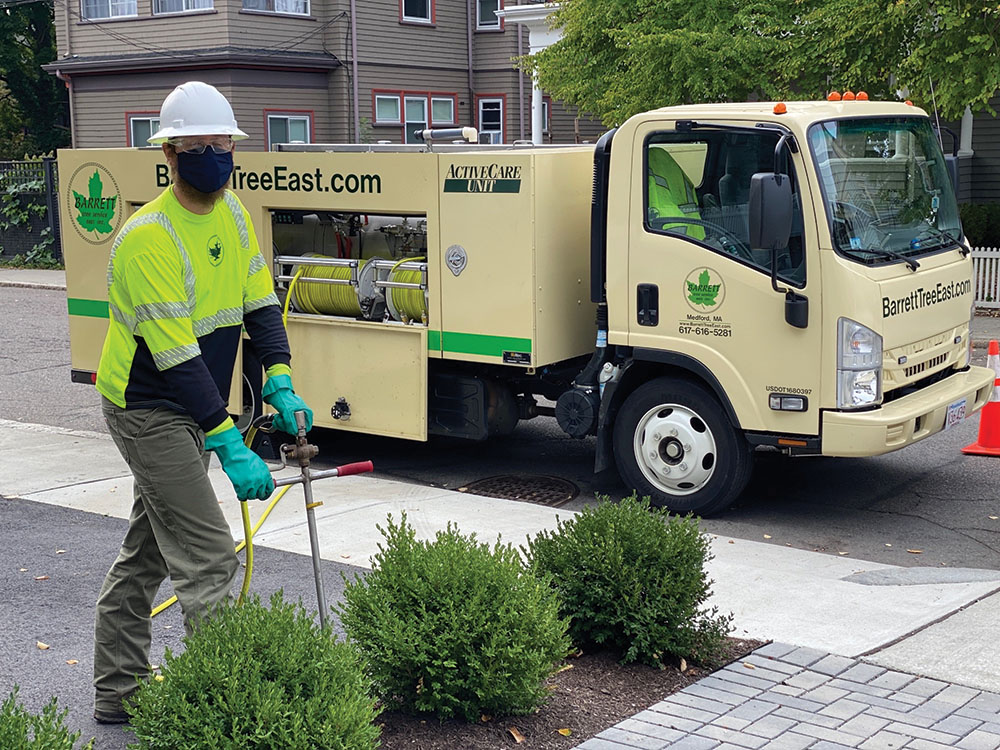
“PHC also is not ‘common knowledge,’ as some tree work is,” Shier continues. “Most clients know they need their tree pruned, but they don’t know that urban trees usually are stressed and need to be assisted.”
Start with what you have
Most of the arborists we spoke with, including Phil Perron, plant health care director for Barrett Tree Service East, Inc., an accredited, nine-year TCIA member company based in Medford, Massachusetts, say the best way to start a PHC program is by looking at what you already have.
“You already have the client base,” says Perron, who jokes that he’s known as Dr. Phil, “so you can approach clients with the concept of ‘tree preservation.’ I can go on a client’s property and see a specimen tree, like an old beech that’s not doing so great, and say, ‘I can do XYZ, and you’ll get another five to seven years from that tree.’
“Someone told me a year ago, ‘You’re walking past more opportunities for PHC work when you go to a client’s door than you’ll ever get by going out and looking for it,’” he adds. “But you have to be honest with them (the client). You’re not going to save every tree.”
Andersen has her own take on starting with an existing client base. “You’re probably already in some sort of green-industry service, whether it’s mowing lawns, landscaping or doing tree care,” she says. “For me, I was mowing lawns forever, and one day a customer asked, ‘Can you prune my flowering dogwood?’ I said sure, and then went and learned what I could about pruning. So start a conversation with your existing customers and point out any issues you see with their trees.
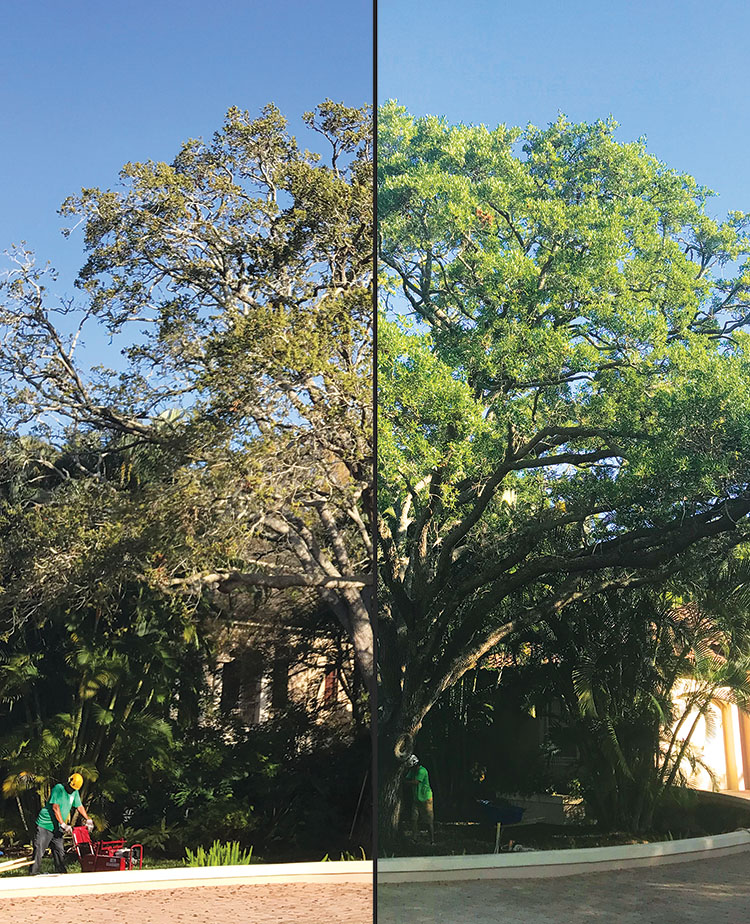
“If you’re overwhelmed by the idea of having so much you need to know, break it down into smaller chunks,” she notes. “ID some of the local trees in your area, and then take maybe one or two of those trees and learn everything you can about them. Maybe you become the Colorado blue spruce expert. Then you can say, ‘Hey, did you know your tree is browning from the bottom up?’ And you can tell them why and what you can do for them.”
Shier echoes the others by saying the most effective way to develop a client base is by using the one you already have from performing pruning and removals over the years. “First, market to your past clients, who hopefully are happy with your services, to see if they’d be interested in plant health care. With new software and websites designed for emailing large numbers of people, as well as the Gmail-based mass-emailing system called GMass, you can reach past clients you hopefully have emails for, or at least addresses and phone numbers.
“The majority of people who are willing to pay you for the pruning and upkeep of their trees usually are willing to help keep those trees healthy,” Shier continues. “Regardless of budget, you usually can find something in the PHC realm to help them, even if it’s just a small, annual fertilization.”
And from there? “The next step,” he says, “is to add PHC to everything you normally do to grow your clientele base: flyers, door hangers, mailers, business cards, website, email, etcetera. You need to make sure your entire company brand shows you do PHC as well as tree pruning and removals. PHC should never be, ‘Oh wait, by the way, do you want this?’ It should be incorporated into the whole business, as if every job should have both pruning and PHC on the estimate.”
Shier adds that it’s important to realize PHC growth doesn’t happen overnight, but that it should be consistently managed and worked at until it becomes a successful program.
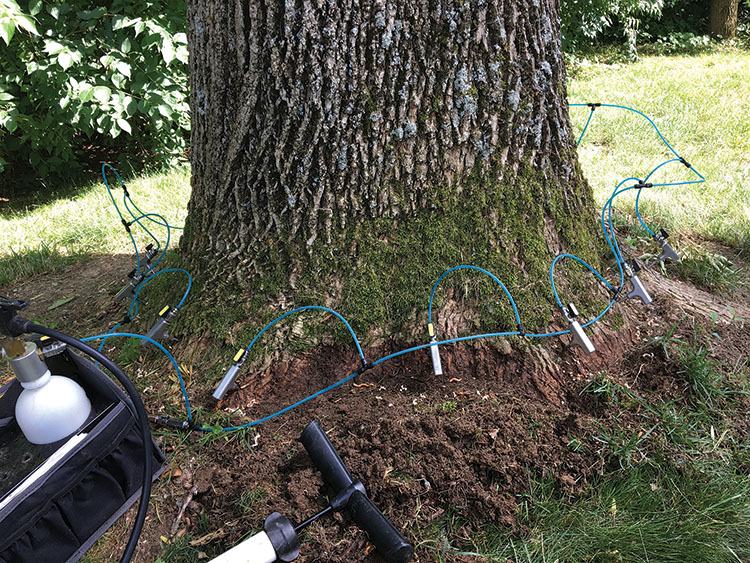
John Ball, Ph.D., BCMA, CTSP and professor of forestry at South Dakota State University, is the only arborist interviewed who takes exception to the idea of launching your PHC program with current clients. “Don’t start with your existing clientele, because they have expectations,” he notes. “Practice on new people. Refine your services with new customers. The last thing you want is to roll out a new program and have it fail with existing customers. But that doesn’t mean you don’t eventually roll over these services to your existing clientele.
“Once you do, look at this as an expansion of their current pest-management program you’re performing, what I call their ‘see and spray’ program,” he adds. “PHC is enhanced pest management. From there, once you have the heart of pest management under control, you can move on to soil management and restoration, then training small trees and managing tree canopies. That way, both you and your customers adjust into your PHC program.”
Perron maintains that his clients are very open to being approached about plant health care and tree preservation. “We have gone through exponential growth in PHC since I started with Barrett in 2014,” he says. “I would say we average 25-30% PHC work. The greater Boston area has people who are more than happy to spend money on maintaining their landscape. I think it’s a positive experience for them.”
However, Perron warns that the sales arborist has to have confidence that their company’s PHC team can deliver on what they’re promising as they walk the client around the yard. “I would tell owners to find that person they have on staff who has a passion for PHC and let them run with it. You’ll know pretty quickly if you have the right person (to head up PHC),” he notes. “And that’s usually not the owner, in my opinion.”
Tammy Kovar maintains that it takes a unique type of person to excel at plant health care. “I have a biology degree and also held very technical positions during my career,” she says. “That’s why I think people are afraid (of PHC). You have to be very inquisitive and have an unabashed interest in the science. If you’re not curious, you can’t do it.”
PHC equipment
For smaller companies, getting into plant health care can mean you start with what you already have for equipment, as well as who you already have for clients. Andersen says that can be as simple as a backpack sprayer and a wheelbarrow. “Fill your wheelbarrow with some mulch, put a layer around the base of a tree and boom! You’re in PHC!” she says with a laugh.
Perhaps that’s oversimplifying it a bit, but Perron agrees with her basic concept. “Starting out, you can keep things as simple as a pickup truck with multiple tanks, doing soil applications. You could get in for around $5,000 – just dip your toe in the waters,” he says. “The nice thing is, it’s a lot less iron (than regular tree care). No chippers, crane or bucket trucks. PHC is basically one person with a backpack sprayer.”
Perron adds that, in New England, another plus of PHC is that his spray trucks only get used about nine months of the year, “so they don’t get the wear and tear of the big trucks, at least not around here.”
Provost says she thinks some arborists are put off by the idea of starting a PHC program because of the equipment needed. “I think it’s important for people to realize they can get into PHC without that big, fancy truck. Just a backpack sprayer is all they really need to get started, and they can spray smaller trees and shrubs. We started by spraying apple trees. Eventually, they can get the bigger spray truck for large trees and an AirSpade for excavating.
“There’s a lot of work that can be done just in caring for new, young trees,” she notes. “You can check the root system, make sure they’re not sinking and the roots aren’t girdling, and then prune them to direct and train the young tree to be gorgeous and strong.”
According to Zack Shier, there is essentially no equipment crossover from basic tree care to plant health care, “and this can make starting PHC difficult,” he notes. “That said, to start a PHC section does not require a lot of upfront cost like it does for a tree crew. You could start with as little as a one-ton truck with a large tank and a pump, a motorized backpack sprayer and a manual backpack sprayer. These three things could essentially do everything you’d need for a small PHC section.”
Kovar agrees that another reason people might not feel comfortable getting into PHC is that they don’t have the right equipment. “To get started, you need an air compressor with an air knife,” she says. “You can rent them – I did that for years. You also need a spray rig. My first was a 250-gallon tank mounted on a trailer.” From there, she says, she has moved up to a 700-gallon spray tank along with a bucket truck and other large equipment.
“If you have no equipment for basic pest management, you’re not ready for PHC,” says Ball. “And you already should know the pests in your area. Otherwise, how are you going to know how to price your program? You need to tailor your program to the properties you’re on, finding the pests that are destroying the aesthetics of the trees.”
Knowledge is king
Although it can be fairly simple to break into PHC, Shier stresses that it does take a certain amount of knowledge and skill. “This is probably the single-biggest
reason companies don’t have, or don’t want to have, a PHC section,” he says. “PHC is very knowledge heavy and sometimes is not as intuitive to the climber or equipment-operator mindset. PHC can get very heavily into the research and science side of things, and the better you can communicate the ‘science-y’ stuff to your clients, the more successful you’ll be in PHC.
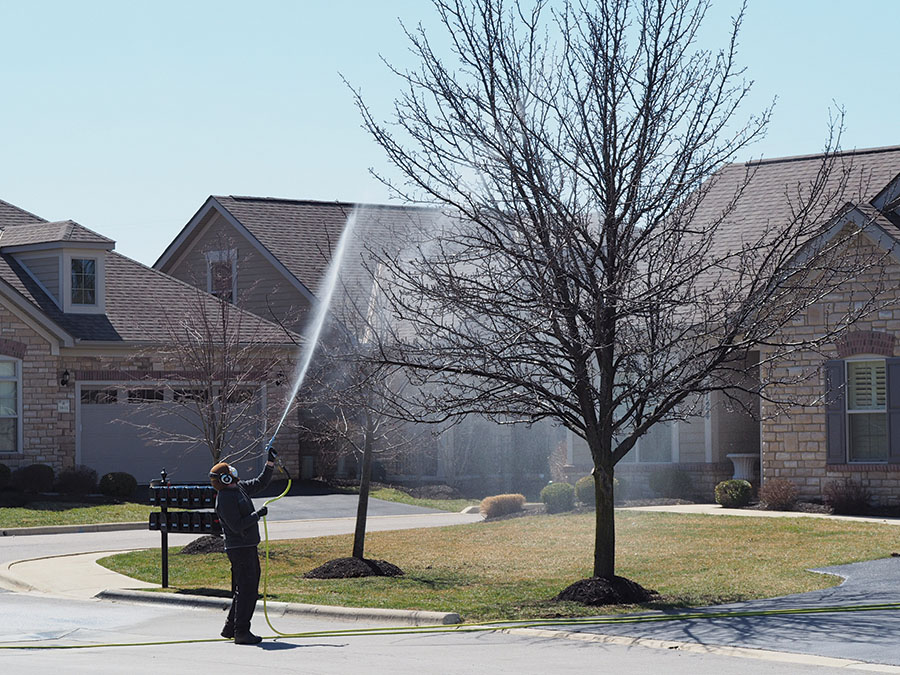
“Well, that isn’t always the easiest task,” he continues. “I studied at The Ohio State University for forestry and generally like the science side of things, and it still took me years to figure out how to sell PHC well, and how to communicate PHC matters consistently and thoroughly. Essentially, you have to understand tree anatomy, physiology, soil science and urban-tree stresses, and how to treat each of those specifically. You don’t need to have a degree in them, but you really do need to know the basics to be successful.
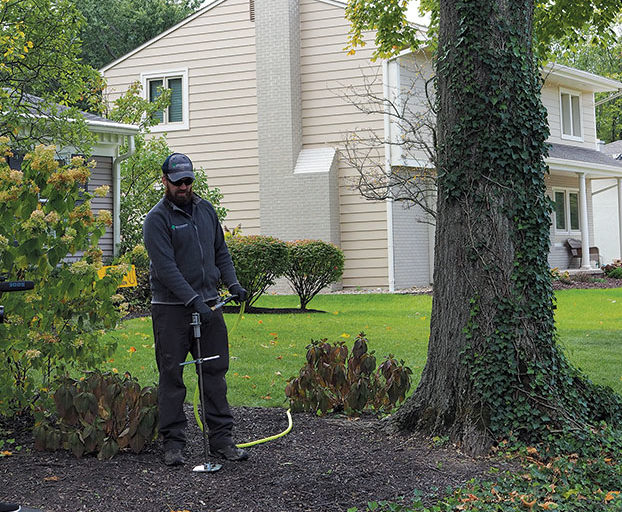
“If I were to do it over, I would recommend finding a mentor or a good series of webinars and learning one facet of PHC, like fertilization, and mastering that first before moving on to the next category, like pests and disease, where additional licensing is required,” Shier suggests.
Tchukki Andersen agrees. “TCIA offers a Plant Health Care Technician program that goes into things like pest management pretty thoroughly,” she says. “It will glaze your eyes over, so take it in chunks. Ask your peers and industry experts for help and advice, and check out TCIA’s mentoring program.”
For another approach to learning, Sylvia Provost suggests speaking to the sales reps who sell the PHC products you’ll be using. “The people selling the products can teach you so much about things like spraying and fertilization,” she says. “And they’re very invested, because the more you learn, the more they’re going to sell you their products, right? I also think it’s important to find a mentor in your area who’s doing PHC. Then read articles, go to conferences, join peer groups, even watch YouTube videos.”
According to John Ball, hiring someone who is dedicated to your PHC program is absolutely essential. “The person I call the ‘scout’ is the person who goes out to the property on a regular basis and interacts with the client,” he says. “The most important skill that person needs to have is people skills. And you’d better know every plant – if you don’t know your patient, how are you going to heal them? I can teach you the rest.
“Heading up your PHC program with an entomologist who hates people isn’t going to work,” he adds. “The two rules I have for my scouts are etiquette – always call the client ‘Mr.’ or ‘Ms.’ by name – and always call their plants by name. That always impresses the customers.”
Take that first step
So, how do you get started on the path toward a successful plant health care program? “Start small,” says Phil Perron. “Offer something as simple as soil testing, and maybe even offer it for free to get your foot in the door. Then get the client on a bio stimulant or a fertilizer, and you’re on your way.”
“Take that first step by determining what area you’re most comfortable with now,” says Tchukki Andersen. “Then start reading the ANSI standards and best-management practices for that.”
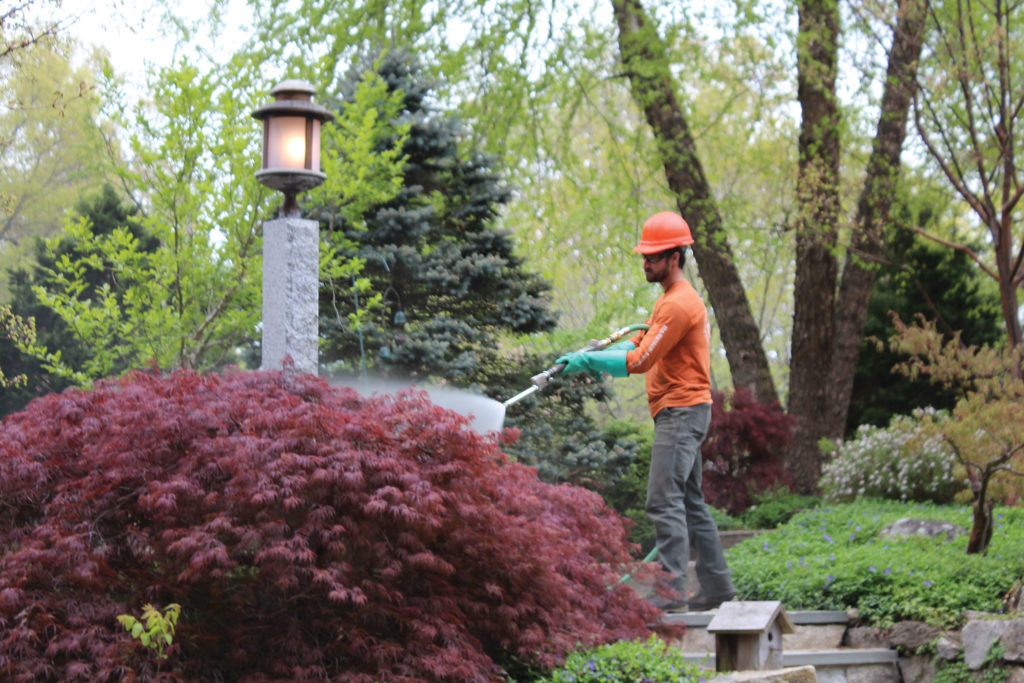
Says Ball, “Move to the next baby step by finding a niche clientele, like maybe 10 to 12 of your local garden-society members, and test your program on them for a reduced rate. Cut your teeth there. You’re not going to make much money your first year. In fact, don’t start a PHC program unless you can take a hit the first year. Then refine your program and let it grow.”
“I’d say the first step you need to take is to get the equipment needed to at least fertilize,” says Shier. “Begin to educate yourself on whatever practices you’ll be offering and incorporate those services into your company brand and marketing material. As your (PHC) clientele grows, so should your ability to diagnose tree issues, including things like insect pests and diseases. As you begin to grow confident in diagnosing and treating, you can get your applicator license through testing. As your knowledge and experience grow, so should your treatment protocols and the scope of what you offer.”
According to these experts, there are any number of ways to launch a PHC program, but a few things are essential. You need the right equipment, the right person to head the program and a holistic view of plant health to make your new service successful.





[…] PHC services diversifies your business offerings and helps you stand out from competitors who may only offer […]